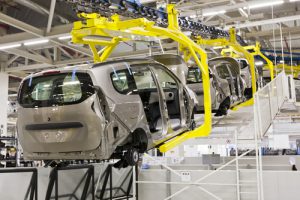Every day we go into the office early and leave a bit later trying to finish things. We are juggling stuff continuously, and it is a full-on firefight but when we Finish for the day and reflect on what we have achieved,
Actually, the answer is nothing. Completely noting – square root of zero.
We have quite a lot of things in-progress but nothing is getting finished, and work seems to be building up even more. After 12 hours we leave with more work that needs to be done then when we started the day.
This is a common thing in the office life today but the most prominent item to blame is multitasking.
WHAT??? 😱😱😱
MULTITASKING??? 😱😱😱
I thought multitasking was crucial for getting everything done in so little time that we have.
But no – actually Multitasking gives us a false sense of busyness and progress but stops us from getting anything done.
Impact of multitasking:
Scientists have found that multitasking can reduce person’s short-term IQ by up 15%.
Now that explains a lot 🧐
Researchers have found that it takes multitaskers 50% longer to get anything done, reduces the productivity by 50% and increase error on average by 50%.
So, I wasn’t getting dumper; I can blame my stupidity to multitasking 🤓
But in all seriousness, the reason why you are not allowed to talk on the phone and drive is that it increases our risk of an accident. When you are busy talking to someone even with handsfree, the person in front of you breaks, and you are looking straight out of your windscreen, but you don’t see the car in front has become stationary till you bump into. This is because our brain cannot handle doing two things at the same time.

Cost of context switching:
Also when we are switching between tasks, it takes our brain time to move across and focus on the other work, and this is called context switching
The researcher at the University of California found that every time you switch between tasks, you lose 20% time to recalibrate your mind. When you are working on a single item like an article or report, and your mind is that state of flow. If you stop and start again after a bit of time, it will take your mind on average 12 mins to get back into that level of focus while also losing all the great ideas you had that time.
yes, 12 mins !!!
But funny things is researcher have found that on average we get distracted every one min 15 secs. For some of us, we don’t get into that flow and focused on getting the task moving.
They also found that if you are working on one project during the day, then the waste is zero but if you have two projects you are switching between during the day, then 20% of your time is simply wasted in context switching. So if your day is 10 hours then 2 hours simply gone in the bin. What happens if you are working on 3, 4 or 5 projects in one day. If you are switching between 5 projects in a day, then about 80 % of your time is wasted. Now you know why it feels like you have not achieved anything.
Time is limited, you can not get it back, whatever time is wasted is gone forever and no way of getting it back so wasting time is a crime that we are committing to ourselves. The biggest victim of our crime is ourselves.

In-progress waste
One thing we don’t consider in our office environment is the cost of unfinished work. Everything that is sitting there unfinished has used up time, energy and resources but has zero value.
The unfinished work is worthless till it is completed and when you are working on multiple items, and then you have multiple items that are unfinished. Sometimes because it has taken so long to complete something the need of it is gone and we have made the decision without the research that we were working on. The longer something is unfinished, the longer, the greater the risk of it not getting completed. But even if the need for the item to be completed is gone, that half-done item has used up precious resource and time.
let’s look at it from the point of the manufacturer to get a better understanding.
Let’s say we are a car manufacturer and building luxury cars – every car that is sitting in the warehouse unfinished or any component sitting in our warehoused unused it money being wasted. We can’t sell the car to the customer till it is finished, so it is stopping money coming into the business, and every unfinished car and components sitting in the warehouse have money and resources invested in it. If we have too many cars that are unfinished, then all the money that is sitting in the warehouse and factory floor is tied up that we can’t use on other project or invest.
What happens when we have too much-unfinished products? Well, in December 2012 General motors started laying off people just before Xmas why: 245000 unsold pickup trucks. That represented 7.5 Billion dollars of unsold inventory.
Look at your pc hard drive and see how much unfinished or unused inventory do you have. How much effort and time and meetings that you did to create all those documents, reports that are either unfinished or never used. That has cost the company and money being wasted.
This is why in Agile and Scrum we try to limit the work in progress (WIP) and Kanban strictly enforced the WIP limit.
Solution: for the non-scrum environment
So -fine: we agree multitasking is bad, but that problem is still there. We have too much work that needs to be done then we have hours in the day.
Here are some suggestions to bringing to your work:
1: Avoid distraction: No one says that every email must be responded back to immediately. Turn off your emails and schedule to look at your email and respond back to them in your calendar.
I personally send all my phone calls to voicemail, and I have scheduled a time to listen to my voicemail msg and call people back if the call was important.
2: Work on highest priority item first and work on it till it is finished. I mean, fully completed before moving onto something else. No half Done work.
3: Plan your tomorrow today. Most people come in the morning and then think what they need to do. They spent first half hour trying to organise there day and while also responding back to all the emails that have come in overnight or early in the morning. They will forget about an important task that they had to do. So if you plan your tomorrow before you leave for the day, you know what important tasks that need to be completed and you can schedule them in for the early part of the day.
other suggestion for entrepreneurs: Themed days
Schedule days when you are going to be working on a specific type of tasks. for example, you could have finance Fridays, So every Friday your main focus would be to deal with your project or business finances. When someone during the weeks asks you for your project budget, you should be able to say that you will come back to them on Friday without looking at your calendar because you know that is the day you are going to deal with finance.
Another example: Marketing Monday – you probably want to put out all your marketing campaign in an early part of your week so that most of the responses coming in are in the early part of the working week. If you put your marketing campaign out on Thursday or Friday, then people will be sending the query to you over the weekend when you would not be around to respond to them.
Aeroplane mode day: where you turn off your phone and email and focus one thing without any distraction what so ever.
For Scrum and Kanban teams:
Limiting the number of item in progress at any given time.
Every team can only have 1.5 items of work in progress per team members. So if the team is consisting of 8 people, then only 12 items can be in-progress
in conclusion:
If you want to go home with something achieved then focus on one thing and only one thing at a time.
find out more:
video interview with the founder of 90 days year: https://youtu.be/T7MCplY_yPc
